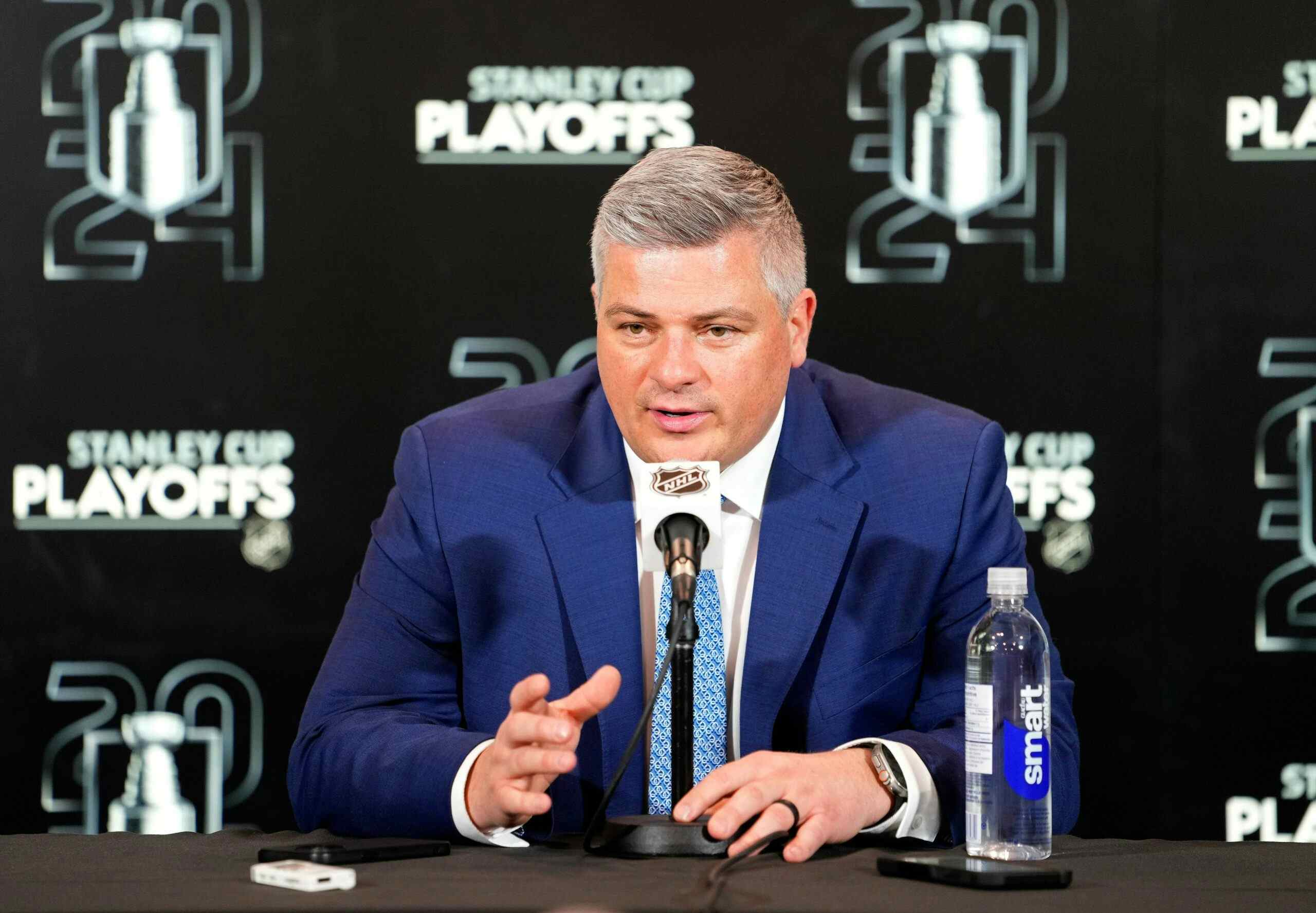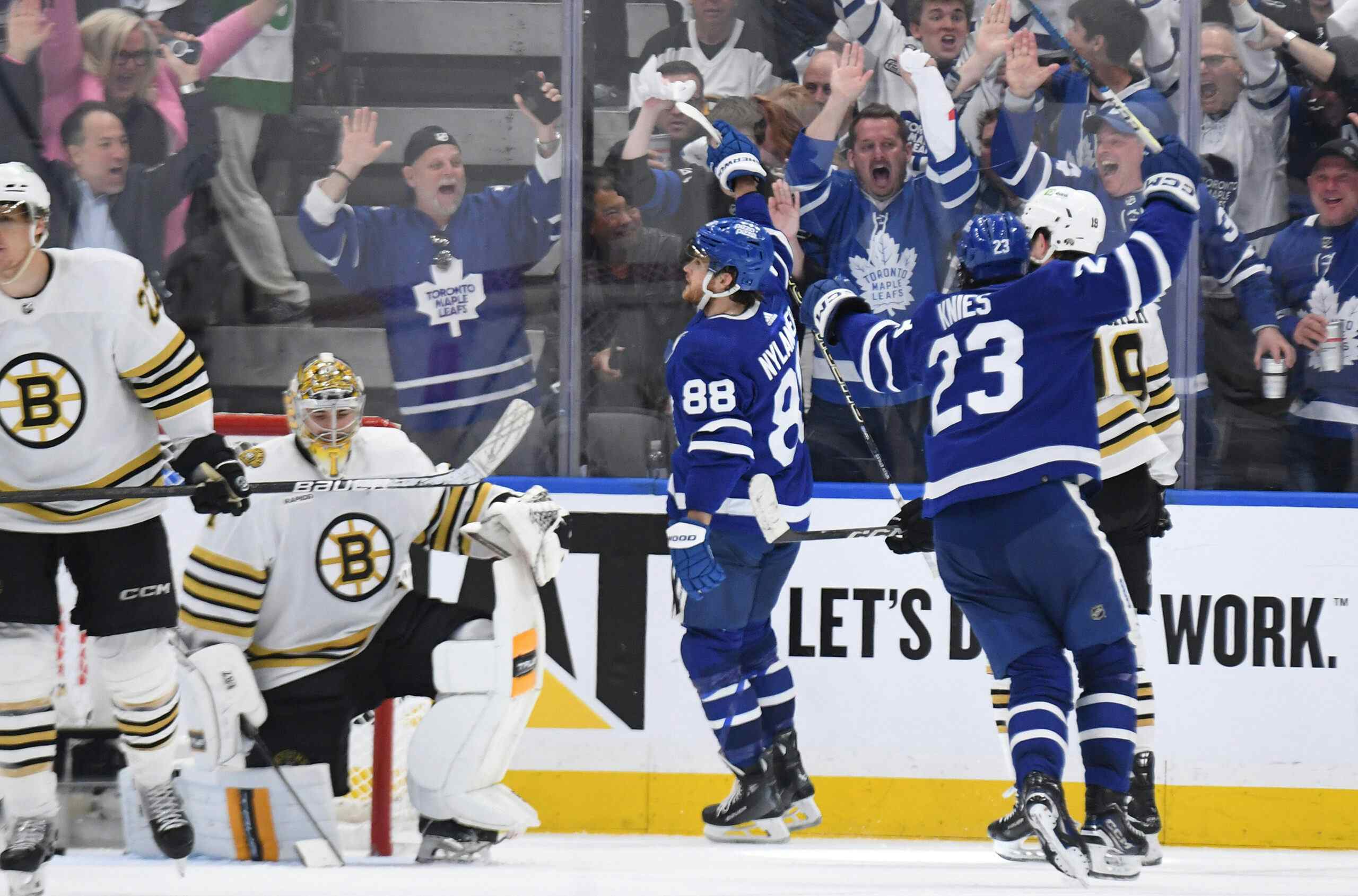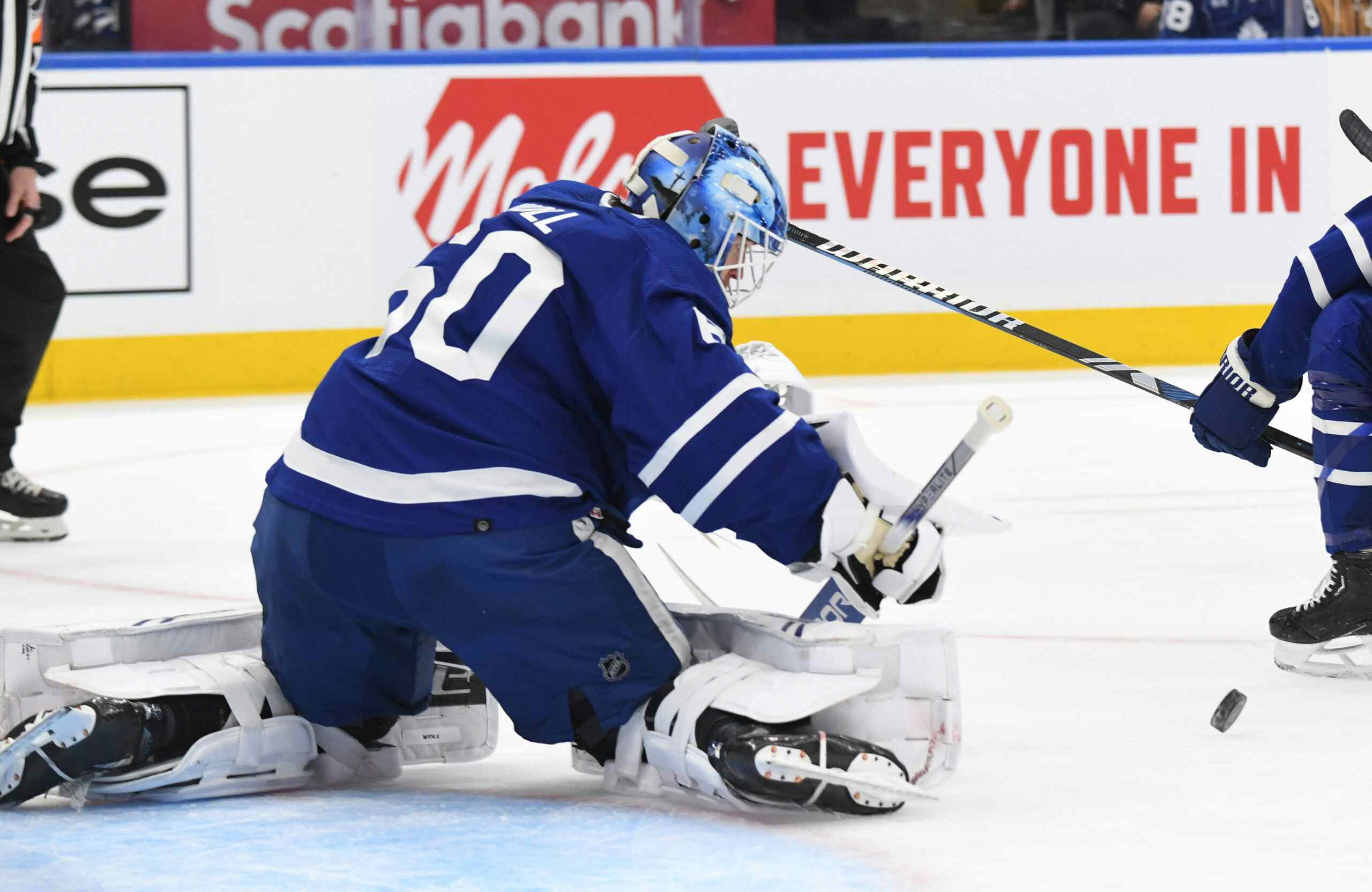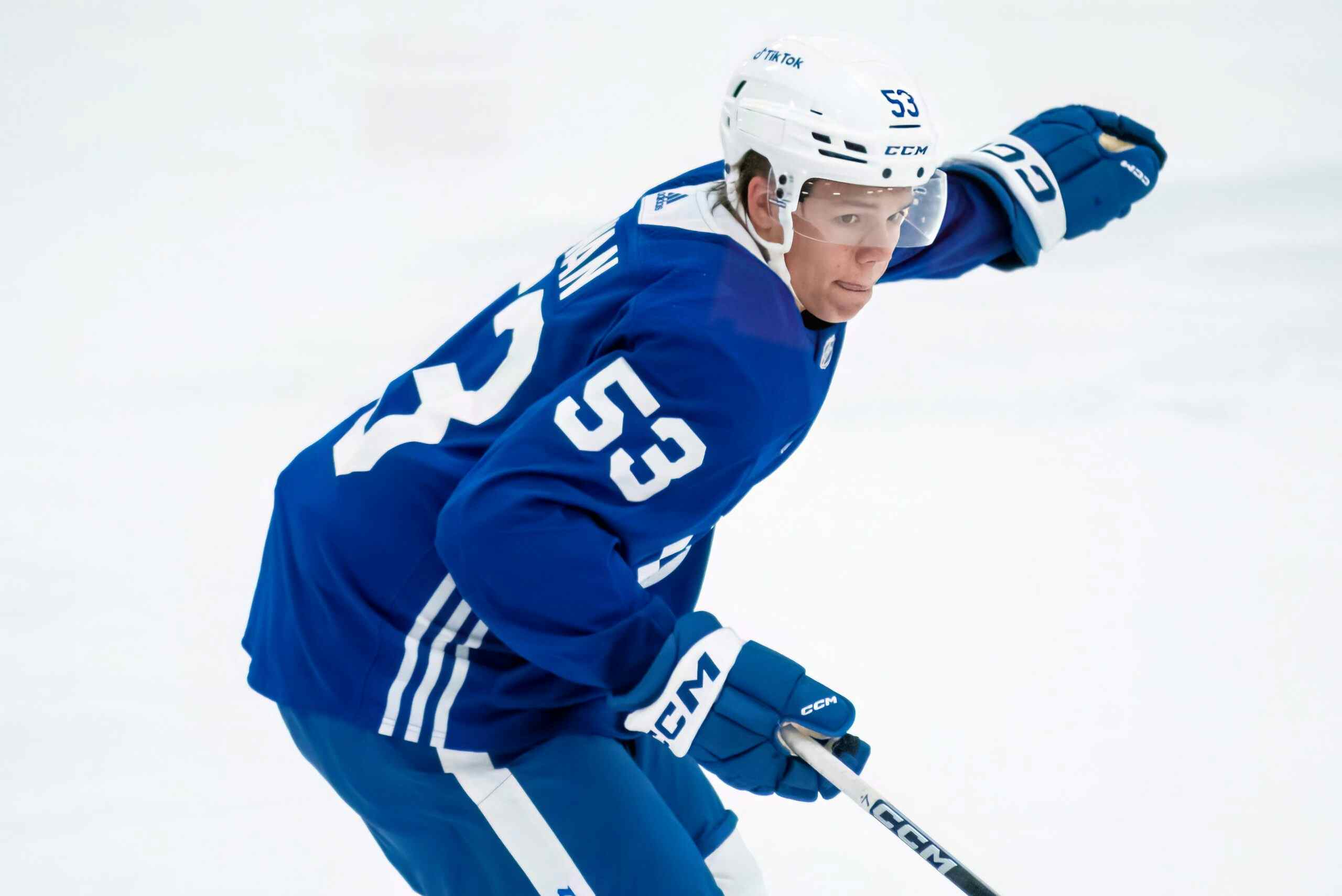Why a rebound of percentages could lead to a quick Leafs turnaround

Photo Credit: Tom Szczerbowski/USA TODAY SPORTS
Remember back in 2013, when we were all yelling about shooting percentages creating a mirage for the playoff-bound Leafs? A mirage which involved the Leafs scoring way beyond their means, James Reimer looking like a Vezina candidate, and everything going from zero to amazing until the last ten minutes of the season?
A mirage that led to acquisitions to make the team tougher, grittier, and more leader-y to make sure the Leafs wouldn’t get burned in their next playoff run? Yeah, well, that wasn’t great. Anyway, it’s a different group now, and the circumstances are a lot different. This year’s Leafs team was absolutely wrecked by bad puck luck and are in a position to get some revenge. The concepts are the same as they used to be, but lets see how the odds end up in their favour.
Cold Sticks
Remember when Nazem Kadri started the season, and looked like he couldn’t get himself a goal to save his life? It was a rough time, and as more and more shots hit posts and pads, the Leafs started dropping early-season games. Such is life when arguably your best forward goes dry.
Kadri finished the year with a 6.5% shooting percentage, not even close to his career average. I crunched the numbers using his all situation’s data and found that if he had shot at his normal rate of 12.5%, he would have been projected to finish the year with 32.6 goals. That made me curious as to how the rest of the team did in this regard.
With this in mind, I took every player who had a notable amount of NHL experience, and put their shooting percentages last year against their shooting percentages over the course of their career. Here were there results at even strength:
| Player | GP | Shots | SH% | Career | Goals | Projected | Difference |
|---|---|---|---|---|---|---|---|
| Leo Komarov | 67 | 102 | 13.7 | 9.4 | 14 | 9.6 | 4.41 |
| Colin Greening | 30 | 45 | 13.3 | 7.1 | 6 | 3.21 | 2.79 |
| Morgan Rielly | 82 | 129 | 4.6 | 3.8 | 6 | 4.94 | 1.06 |
| Joffrey Lupul | 46 | 72 | 12.5 | 11.9 | 9 | 8.6 | 0.4 |
| Milan Michalek | 13 | 7 | 14.3 | 10.4 | 1 | 0.73 | 0.27 |
| Ben Smith | 16 | 16 | 12.5 | 11.1 | 2 | 1.78 | 0.22 |
| Martin Marincin | 65 | 52 | 1.9 | 1.6 | 1 | 0.84 | 0.16 |
| James Van Riemsdyk | 40 | 95 | 9.5 | 9.4 | 9 | 8.93 | 0.07 |
| PA Parenteau | 77 | 127 | 10.2 | 10.4 | 13 | 13.22 | -0.23 |
| Brad Boyes | 60 | 60 | 10 | 10.5 | 6 | 6.3 | -0.3 |
| Shawn Matthias | 51 | 59 | 10.2 | 11 | 6 | 6.49 | -0.49 |
| Jake Gardiner | 79 | 100 | 6 | 6.6 | 6 | 6.59 | -0.59 |
| Matt Hunwick | 60 | 70 | 2.9 | 3.7 | 2 | 2.6 | -0.6 |
| Mark Arcobello | 20 | 30 | 10 | 12 | 3 | 3.62 | -0.62 |
| Dion Phaneuf | 51 | 84 | 3.6 | 4.4 | 3 | 3.67 | -0.67 |
| Rich Clune | 19 | 9 | 0 | 7.5 | 0 | 0.68 | -0.68 |
| Roman Polak | 55 | 53 | 1.9 | 3.4 | 1 | 1.78 | -0.78 |
| Daniel Winnik | 56 | 81 | 4.9 | 6 | 4 | 4.84 | -0.84 |
| Frank Corrado | 39 | 36 | 2.8 | 6.9 | 1 | 2.48 | -1.48 |
| Brooks Laich | 21 | 32 | 3.1 | 8.1 | 1 | 2.6 | -1.58 |
| Tyler Bozak | 57 | 78 | 11.5 | 14 | 9 | 10.9 | -1.9 |
| Nick Spaling | 35 | 31 | 3.2 | 9.9 | 1 | 3.05 | -2.05 |
| Michael Grabner | 80 | 93 | 8.6 | 11.6 | 8 | 10.81 | -2.81 |
| Peter Holland | 65 | 108 | 3.7 | 12.2 | 4 | 13.12 | -9.13 |
| Nazem Kadri | 76 | 217 | 6 | 11.1 | 13 | 24.11 | -11.1 |
As you can see, most of the team had rough years, with a couple of extremities on both sides. Komarov’s big boost probably comes from his change in role; he saw himself go from a fourth-line grinder with one career shot on the powerplay to a top-six winger. He also shot more in high-danger areas, which helped him out. Players like Greening, I imagine, see their variance come from a smaller sample.
On the other side, you have players like Kadri and Michael Grabner who appeared snakebit all season, and players like Peter Holland, who did the reverse Komarov and went from being a fill-in top scorer to a grinder on the fourth line. Similar is seen in Byron Froese, who I didn’t include on the list due to his lack of prior NHL experience. Froese was a stellar shooter in the ECHL and AHL last season, but playing shutdown and defensive minutes likely meant a lot of his shots came from dump ins or came at the end of his shift when he was starting to tire from trekking up the ice. As for Kadri, I’m lost. Eleven goals is an obscene amount to get shaven off of one player.
Overall, the net impact of the shooting percentage variance was a shocking -26.46 goals at even strength. Some of that surely comes as a product of score effects and rebounds from failed attempts, but that’s still an alarming amount of offence to lose due to percentage swings.
I figured that there’d be less chance of score effects coming into play by looking at powerplay numbers. Sure enough, that situation is even more terrifying. Kadri alone loses 4.2 goals from variance on the man advantage; Holland, Joffrey Lupul, Brad Boyes, and Dion Phaneuf are all in the 2 goal range as well. Almost the entire team underperformed on the powerplay; Komarov skews the numbers due to his single shot of experience prior to scoring 4 on 23 this year, but depending on how much rope you want to give his numbers, the team loses between 14 and 17 goals compared to their historical averages.
The team stats back this up; Toronto’s 103.6 attempted shots per 60 minutes in 5-on-4 situations were 3rd behind Los Angeles and Boston this season, but their shooting percentage fell to 30th. Maybe their powerplay structure needs some tweaking for efficiency, but it’s possible that the team simply suffered a continuation of bad puck luck. Now, let’s look to the other side of the ice.
Between The Pipes
I decided to apply the same theory to Toronto’s goaltenders. After all, Jonathan Bernier was absolutely awful until January, and while Garret Sparks start his season well and his enough positive history in the AHL and ECHL to believe he can be at least a replacement level NHL goaltender, he cratered after his groin injury. So with that in mind, I compared Bernier and Reimer to their career averages, and Sparks’s second part of his stint to his first.
| Goaltender | GP | SV% | Career | GA | Projected | Difference |
|---|---|---|---|---|---|---|
| Jonathan Bernier | 38 | 0.908 | 0.916 | 103 | 93.5 | -9.5 |
| James Reimer | 32 | 0.918 | 0.913 | 75 | 80.2 | 5.2 |
| Garret Sparks | 17 | 0.884 | 0.915 | 38 | 27.9 | -10.2 |
Now that the season is over with, seeing numbers like this is oddly encouraging for the team. With his late-season surge considered, it’s very unlikely that Bernier is going to be as bad as he was last year again. I’m inclined to argue the same for Sparks as well, though given the acquisition fo Frederik Andersen, it would take injuries or a Bernier trade to give him a chance to prove it. Whatever the case, below-average goaltending looks to have cost the Leafs about fifteen goals last year.
Piecing It Together
If the Auston Matthews draft lottery was won through good luck, Toronto’s position in it was created by bad luck. Without even considering the wave of rookies who had weaker numbers but no history to match, there’s a very real chance that the Leafs sacrificed somewhere in the neighbourhood of 40 to 50 goals to percentages last season.
A forty goal gap brings the Leafs, who were 29th in goal differential with a -48, up to 17th in the statistic; ahead of the Detroit Red Wings, who made the playoffs by a tiebreaker rather than finishing in last by a point. Give them 50, and you get into the positives, jumping ahead of the Philadelphia Flyers as well.
Now, keep in mind that a team that was struggling to score goals to their potential is about to add three blue chip prospects in Auston Matthews (2nd in the NLA in goals), and Mitch Marner (18.6 SH% in the OHL last year), and are integrating William Nylander (17.3% in his AHL career) into the fold full time. Those percentages are a bit on the high side, but all three should average out to be in the 11-12% range throughout the year, and they should be putting a lot of pucks to the net.
The presence of Nylander and Marner will also bring the offensive reliance on Komarov along the right wing down a bit too, which works well, given that he’s the only real risk of negative regression. Many of Toronto’s lower career shooters from last year will either be off the roster (Phaneuf, Winnik, Clune) or played in reduced rolls (Marincin, Hunwick, Polak, Greening, Corrado, Laich). New acquisition Matt Martin, unfortunately, is a low-percentage shooter who had a spike last year, but his minutes will be minimal and I can’t imagine that he’ll be the shot-driver on his line, so that’s not a huge issue.
On the other side of things, I find it hard to imagine a team that is better suited than ever to hold the offensive zone, adds Nikita Zaitsev, lessens the responsibility of Polak and Hunwick, has more familiarity with Babcock’s systems, and has its younger defensive core further ahead in their development cycle is going to give up 2490 shots again this year. That alone should help them defensively, but getting a steady career 0.918 goaltender in Frederik Andersen and a high chance of a bounce-back from either Bernier or Sparks should mean that a few more of the pucks that do get to the net get stopped.
There’s been a lot of talk over the past few days, particularly in justification of decisions, that the Leafs are a rebuilding team that expects to be in the Nolan Patrick sweepstakes next year. I don’t know how much of that is true. While they should by no means be “going for it” and making bold, future-costing decisions, the group they have right now might not be as incapable as we think they are. This quantification of “the bounces” shows that the Leafs were burned heavily and near-universally last year by percentage variance, and that a lot of these guys have shown in the past that they’re capable of doing better.
As we all know, a lucky shot can be the difference between two points and zero. Toronto is in a position to get a bunch more lucky shots next year, which is a good place to be for a team that still performed better than just about every last-place team in the cap era despite that. Contention might be a ways away, but decency appears to potentially be within arms reach.
Recent articles from Jeff Veillette





